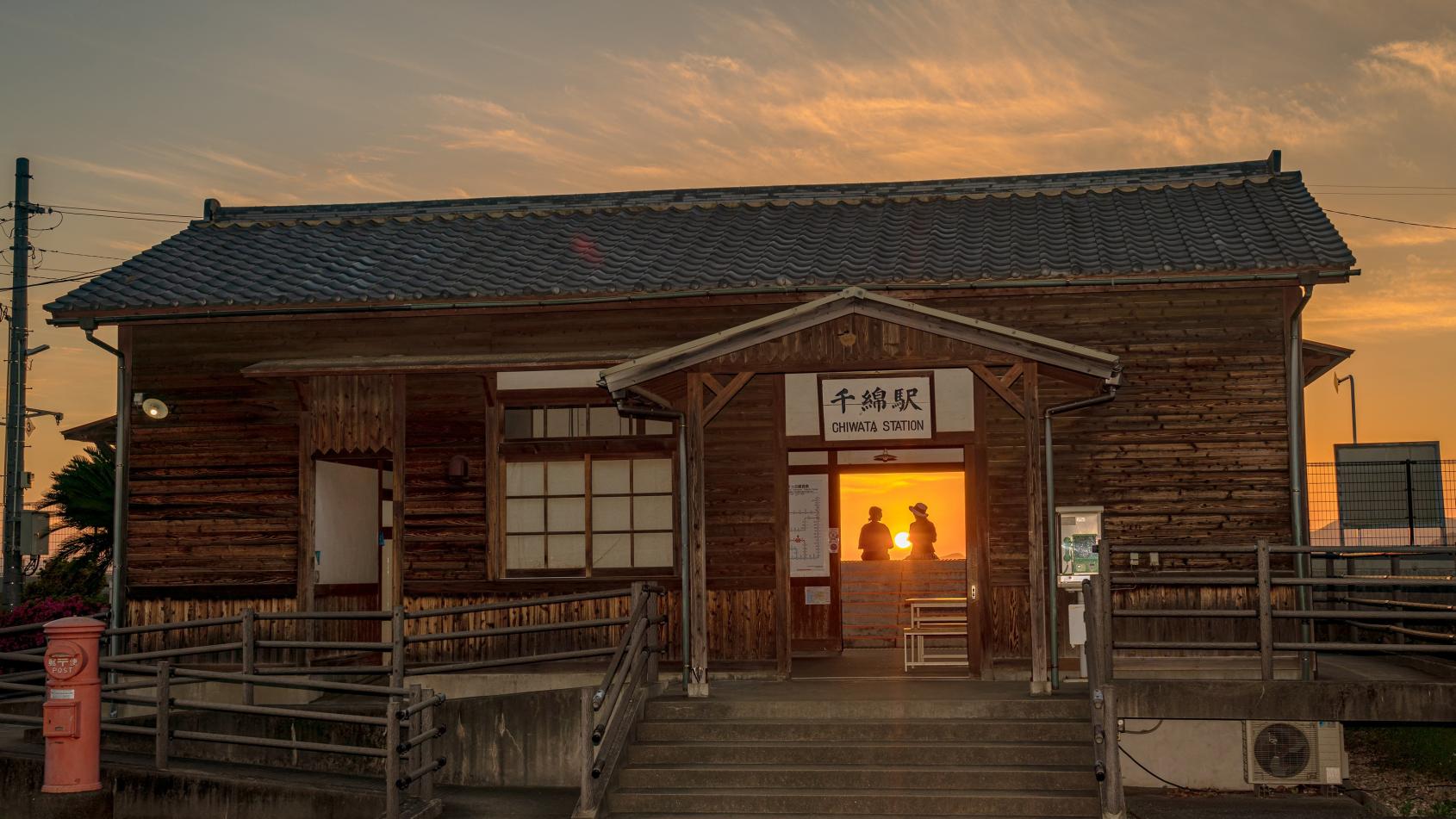 The Nagasaki City and Iojima Island Resort Course (4 Days)
The Nagasaki City and Iojima Island Resort Course (4 Days)
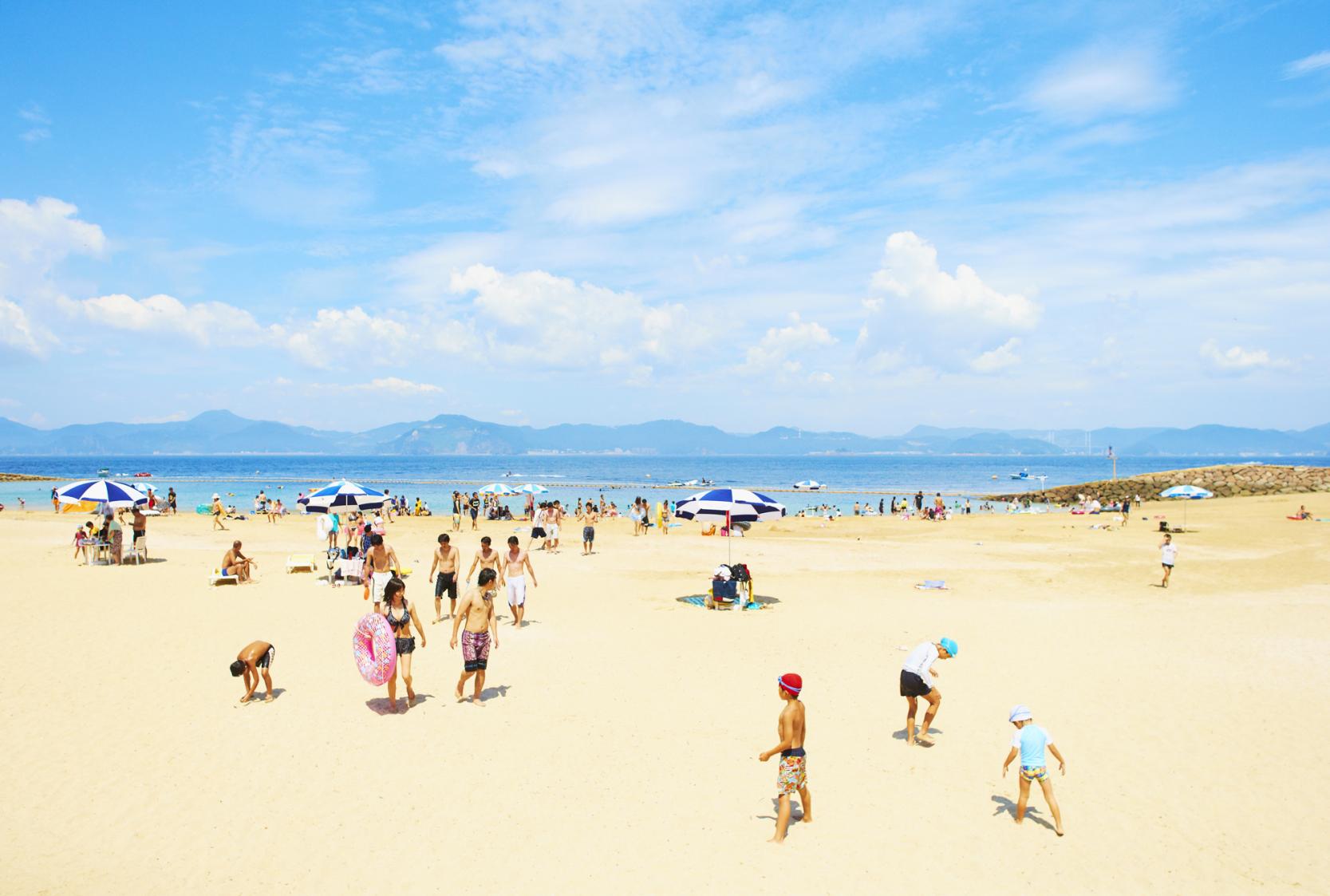
This course will guide you to some of the popular sightseeing spots in Nagasaki City including Gunkanjima (Battleship) Island, and to a relaxing resort on Iojima Island, which can be easily accessed by free shuttle buses.
After a full day of exploring Nagasaki City, Iojima Island offers a variety of entertainment and activities that let you relax and unwind at this beautiful resort.
- Required Time:4days
- Means of Transportation:by tram, walk, by bus
-
Print
Overview
- 【Day 1】Nagasaki Hypocenter Park
- 【Day 1】The Nagasaki Atomic Bomb Museum
- 【Day 1】Remains of Urakami Cathedral
- 【Day 1】Sanno Shrine and the One-Legged Torii Gate
- 【Day 1】Mt. Inasa & Nagasaki Ropeway
- 【Day 1】Shiambashi
- 【Day 1】Stay at Nearby Hotels
- 【Day 2】Hashima (Gunkanjima, Battleship Island)
- 【Day 2】Shinchi Chinatown
- 【Day 2】Gunkanjima Digital Museum
- 【Day 2】Oura Cathedral / La cathédrale d’Oura
- 【Day 2】Glover Garden
- 【Day 2】Iojima (Outdoor BBQ / Onsen / Bedrock Bathing) i+Land nagasaki
- 【Day 3】Rent a bicycle at i+Land nagasaki
- 【Day 3】Marine Activities
- 【Day 3】Stay at Nearby Hotels
- 【Day 4】Nagasaki Station
START
Approx. 10 min. by tram from Nagasaki Station to Peace Park, then approx. 5 min. walk
【Day 1】Nagasaki Hypocenter Park
Ground Zero of the Atomic Bombing in Nagasaki
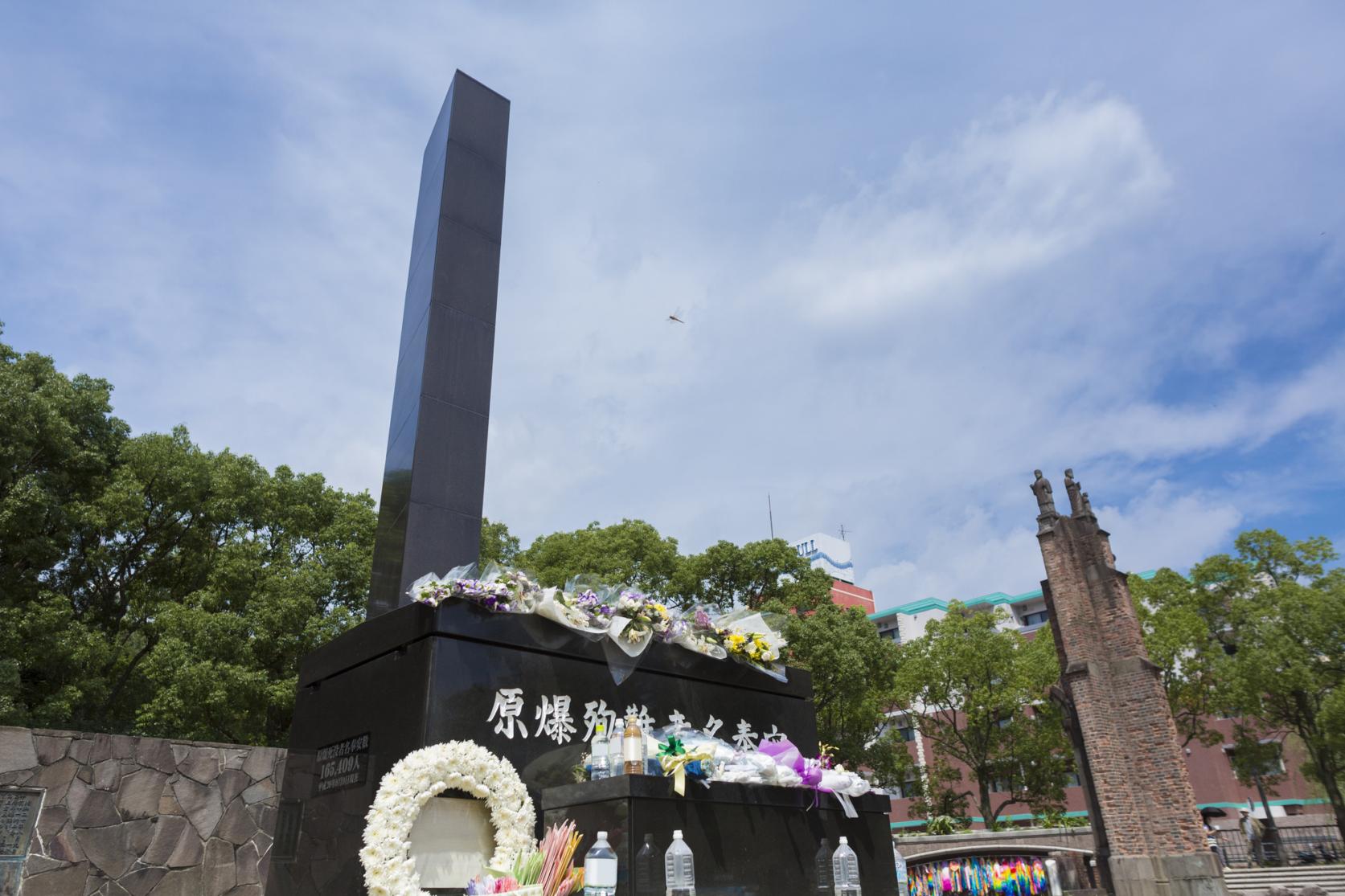
Nobel Peace Prize for 2024
The Norwegian Nobel Committee has decided to award the Nobel Peace Prize for 2024 to the Japanese organisation Nihon Hidankyo. This grassroots movement of atomic bomb survivors from Hiroshima and Nagasaki, also known
as Hibakusha, is receiving the Peace Prize for its efforts to achieve a world free of nuclear weapons and for demonstrating through witness testimony that nuclear weapons must never be used again.
| Address | 852-8118 長崎県長崎市松山町 | |
|---|---|---|
| TEL | 095-822-8888(長崎市コールセンターあじさいコール) | |
| Closed | 12/29~1/3 |
Approx. 5 min. walk
【Day 1】The Nagasaki Atomic Bomb Museum
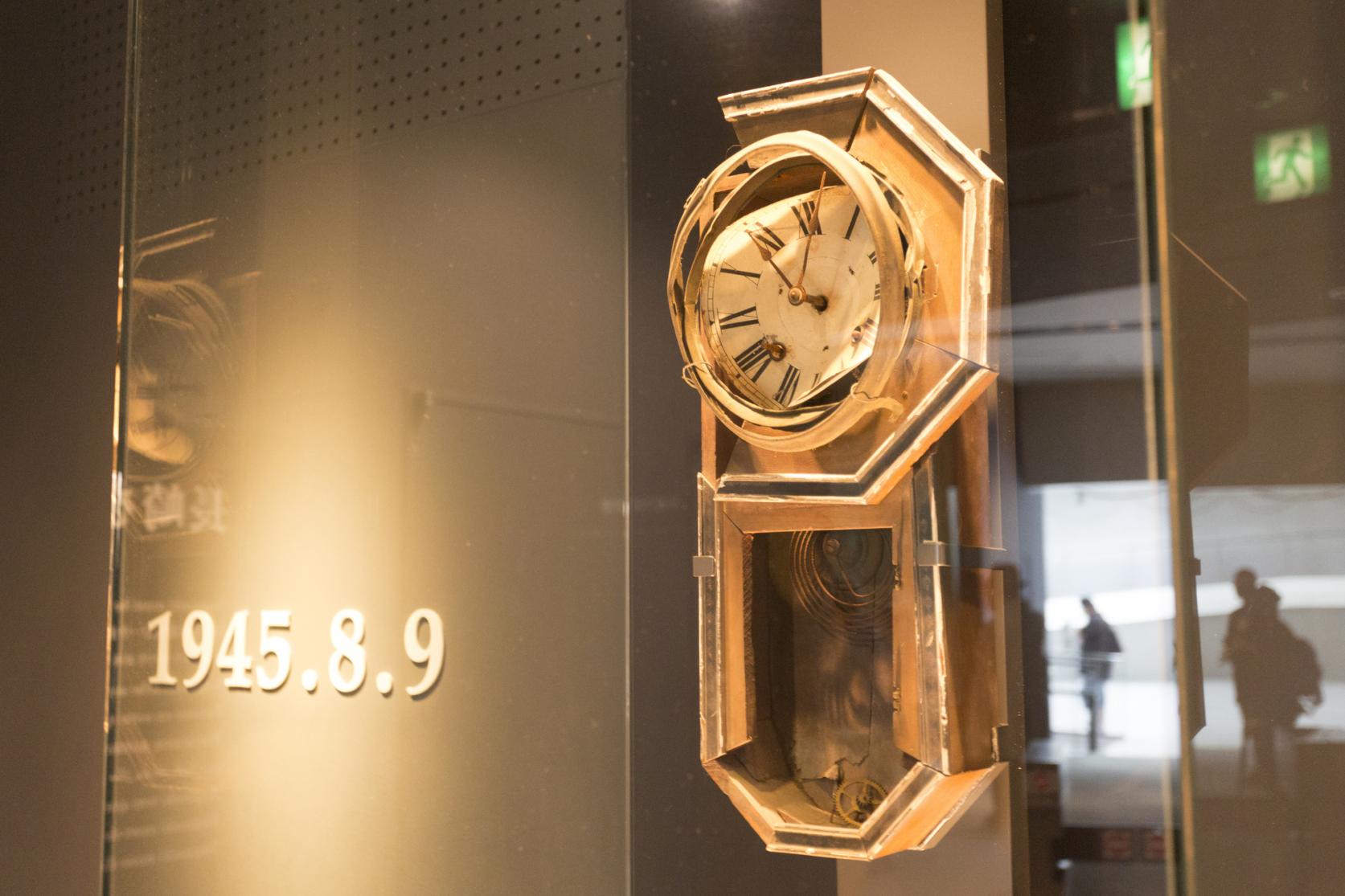
Nagasaki Atomic Bomb Museum covers the history of this event in the accessible form of a story. It begins with the disastrous scene of the attack and includes the events leading up to the dropping of the atomic bomb, the reconstruction of Nagasaki up to the present day, the history of nuclear weapons development, and the hope for a peaceful world free of nuclear weapons.
Comparing the scenes of Nagasaki immediately after the bombing with the appearance of the city today, one cannot help but be impressed by the remarkable spirit of survival and the immutable strength of the people of Nagasaki.
Nobel Peace Prize for 2024
The Norwegian Nobel Committee has decided to award the Nobel Peace Prize for 2024 to the Japanese organisation Nihon Hidankyo. This grassroots movement of atomic bomb survivors from Hiroshima and Nagasaki, also known
as Hibakusha, is receiving the Peace Prize for its efforts to achieve a world free of nuclear weapons and for demonstrating through witness testimony that nuclear weapons must never be used again.
| Address | 852-8117 長崎県長崎市平野町7-8 | |
|---|---|---|
| TEL | 095-844-1231 | |
| Hours of Operation | 8:30~17:30(Last entry at 17:00) ※Hours of operation may change depending on the season. |
Approx. 5 min. walk
【Day 1】Remains of Urakami Cathedral
Conveying the Horror of the Atomic Bomb to Future Generations
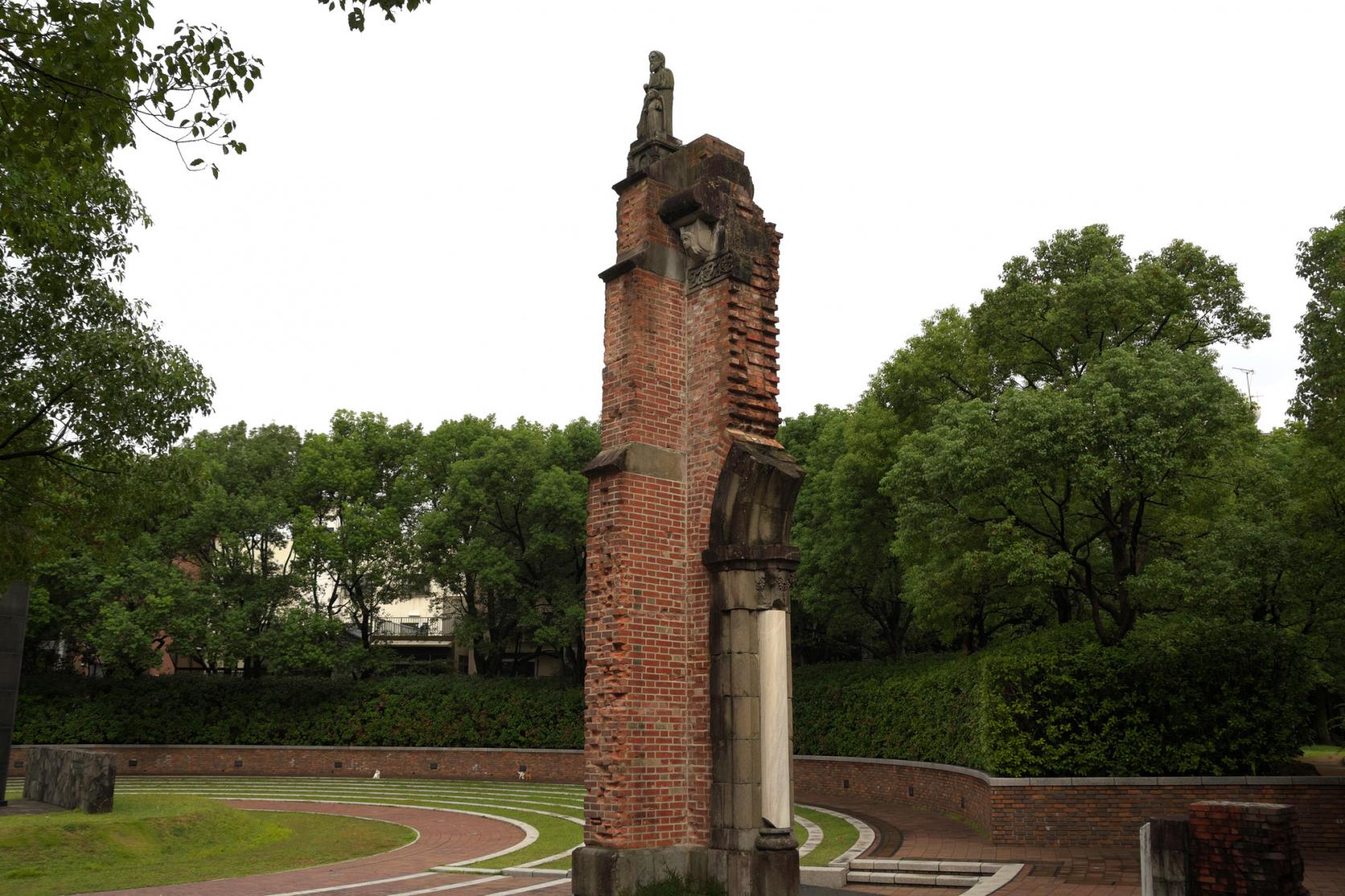
On August 9th, 1945, an atomic bomb detonated 500 meters above Matsuyama in Nagasaki City at 11:02am. The area within a 2.5 kilometer radius of the hypocenter was utterly devastated, and the rest of the city was left in ruins. After the bombing, which destroyed all plant life around the hypocenter, people said that no plants would grow there for the next 75 years. However, one month after the atomic bombing, about 30 kinds of plants started to grow again. Today, there are about 500 cherry blossom trees in the Hypocenter Park, as well as flowers and lush greenery that can be seen throughout the year. It truly captures the power of revival.
Urakami Cathedral, which was located on a small hill about 500 meters northeast of the hypocenter, was the most magnificent cathedral in the Orient, but the explosion from the atomic bomb left only a few of its walls still standing. This side wall was part of the south side of the cathedral and was relocated to its current location after the war.
| Address | 852-8118 長崎県長崎市松山町 | |
|---|---|---|
| TEL | 095-822-8888(長崎市コールセンターあじさいコール) | |
| Closed | 12/29~1/3 |
Approx. 15 min. walk
【Day 1】Sanno Shrine and the One-Legged Torii Gate
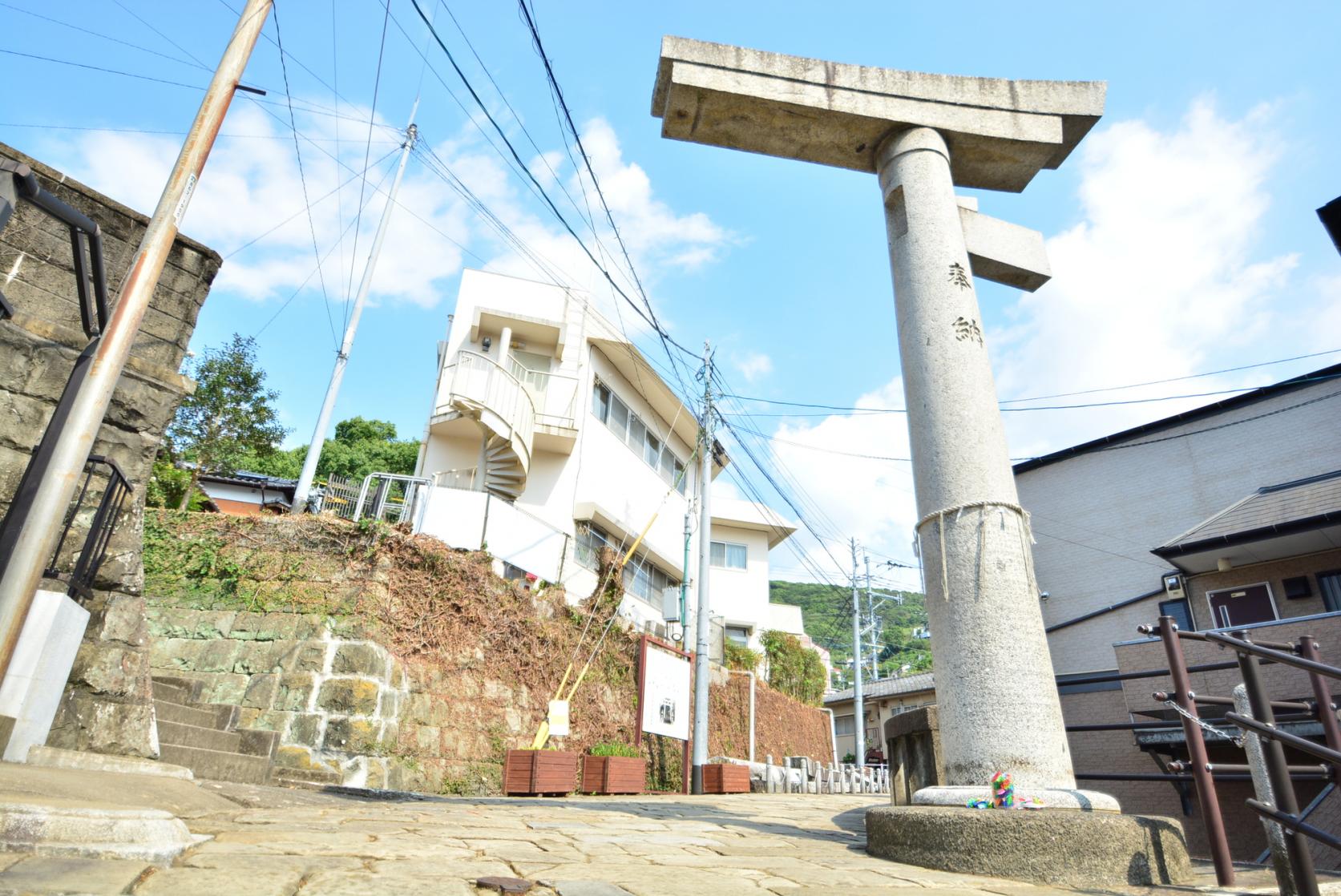
| Address | 852-8102 長崎県長崎市坂本2-6-56 | |
|---|---|---|
| TEL | 095-844-1415(山王神社) |
Approx. 10 min. walk, approx. 10 min. by tram (University Hospital Tram Stop〜Nagasaki Station), then approx. 10 min. by bus (Bus No. 3 or Bus No. 4 from Nagasaki Station〜Ropeway-mae)
【Day 1】Mt. Inasa & Nagasaki Ropeway
Selected as one of the Top 3 Night Views in the World in 2021 with Shanghai and Monaco
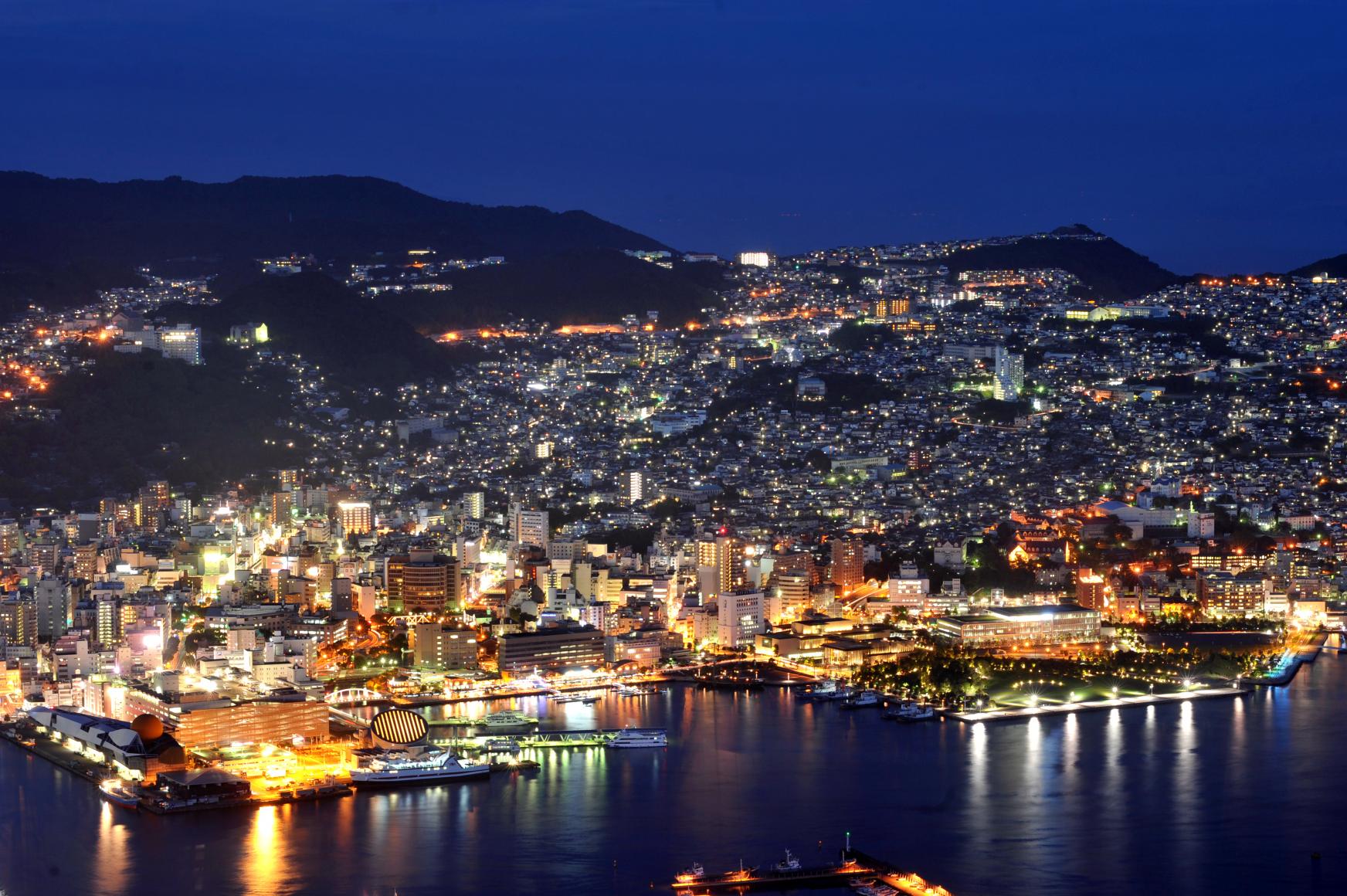
| Address | 長崎県長崎市稲佐町 | |
|---|---|---|
| TEL | 095-861-7742(稲佐山公園管理事務所) | |
| Hours of Operation | 8:00~22:00 |
Descend the mountain via ropeway, approx. 10 min. by bus (Bus No. 20 or Bus No. 40 from Ropeway-mae〜Nagasaki Station), then approx. 10 min. by tram (Nagasaki Station〜Shiambashi Tram Stop)
【Day 1】Shiambashi
A Night Out in a Vibrant Town
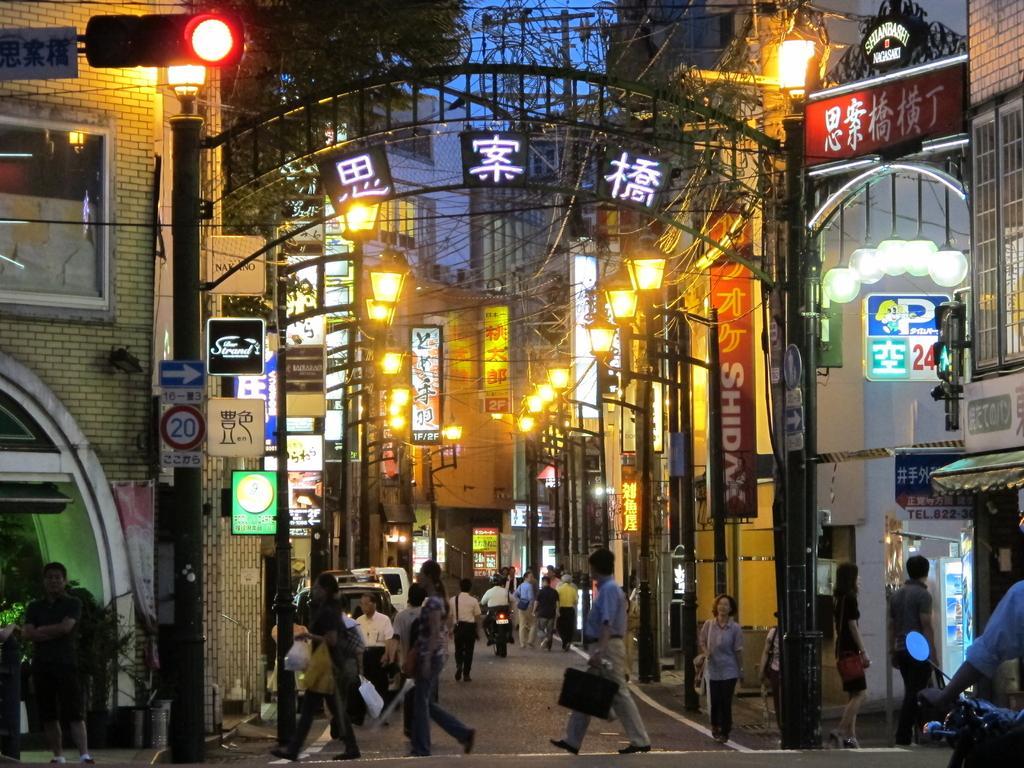
Nagasaki's number one downtown area. Enjoy the night in Nagasaki in this vibrant town with old-fashioned charms such as historic restaurants, retro police boxes, and narrow alleyways. Arrive in approx. 10 minutes by tram from JR Nagasaki Station (get off at Shiambashi Station).
Approx. 5 min. walk, then approx. 15 min. by tram (Shiambashi Tram Stop〜Nagasaki Station)
【Day 1】Stay at Nearby Hotels
Approx. 5 min. by tram (Nagasaki Eki-mae〜Ohato Station), then approx. 40 min. by boat from Nagasaki Port (Gunkanjima Landing & Cruise)
【Day 2】Hashima (Gunkanjima, Battleship Island)
A UNESCO World Heritage Site, and model of the "Dead City" in the movie Skyfall.
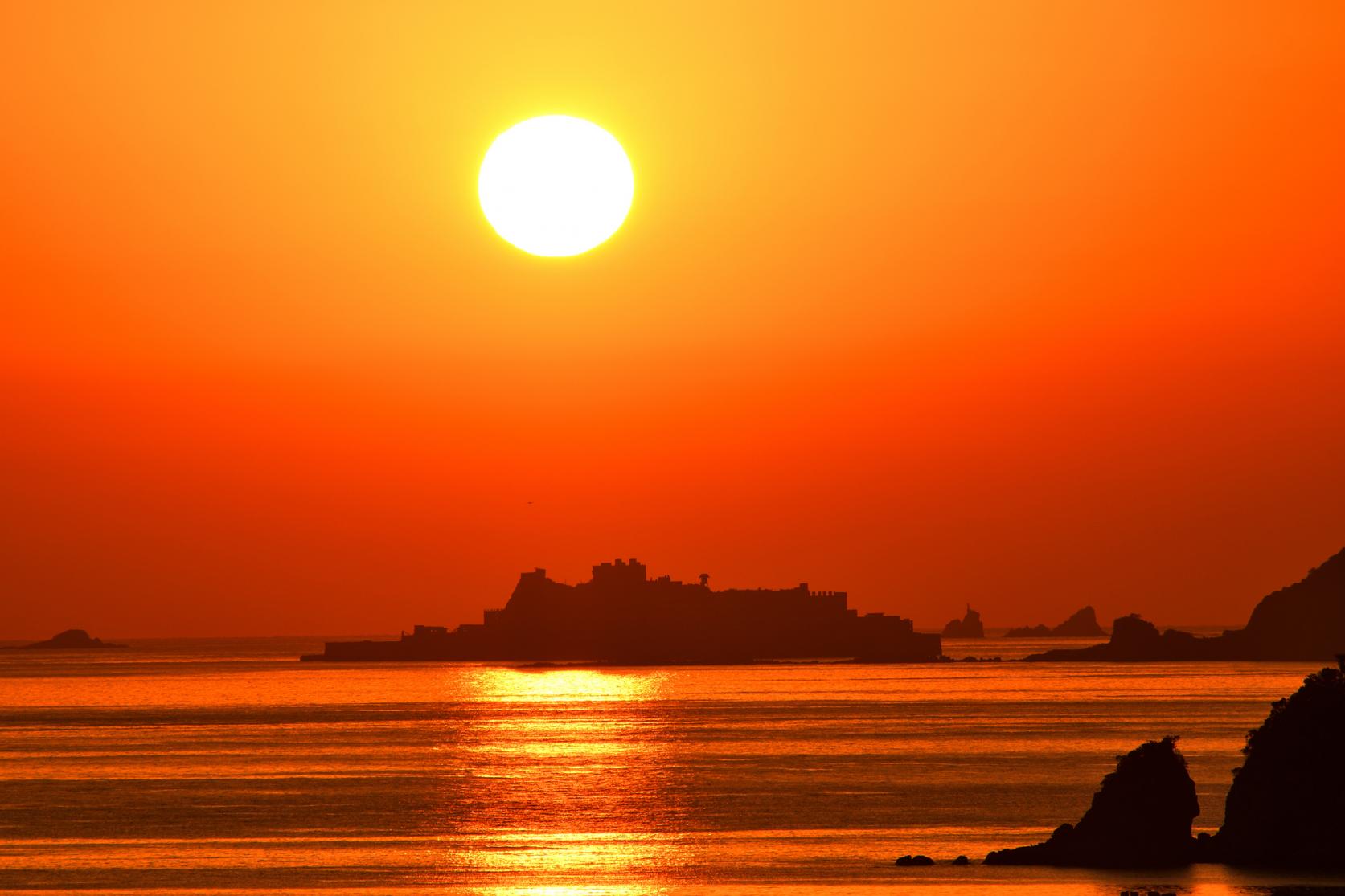
In 2015, Hashima Island was registered as a UNESCO World Heritage site, listed as a component of “Sites of Japan’s Meiji Industrial Revolution: Iron and Steel, Shipbuilding, and Coal Mining Industries.” In addition, it received worldwide attention as it was the model for the “Dead City” in the James Bond movie “Skyfall” (2013), and the model used for the live action movie of "Attack on Titan" (2015).
Today, cruising tours and landing tours to Hashima Island are offered by several tour operators in Nagasaki City, but reservation in advance is required.
| Address | 851-1315 長崎県長崎市高島町端島 | |
|---|---|---|
| TEL | 095-822-8888(長崎市コールセンターあじさいコール) |
Approx. 15 min. walk from Nagasaki Port
【Day 2】Shinchi Chinatown
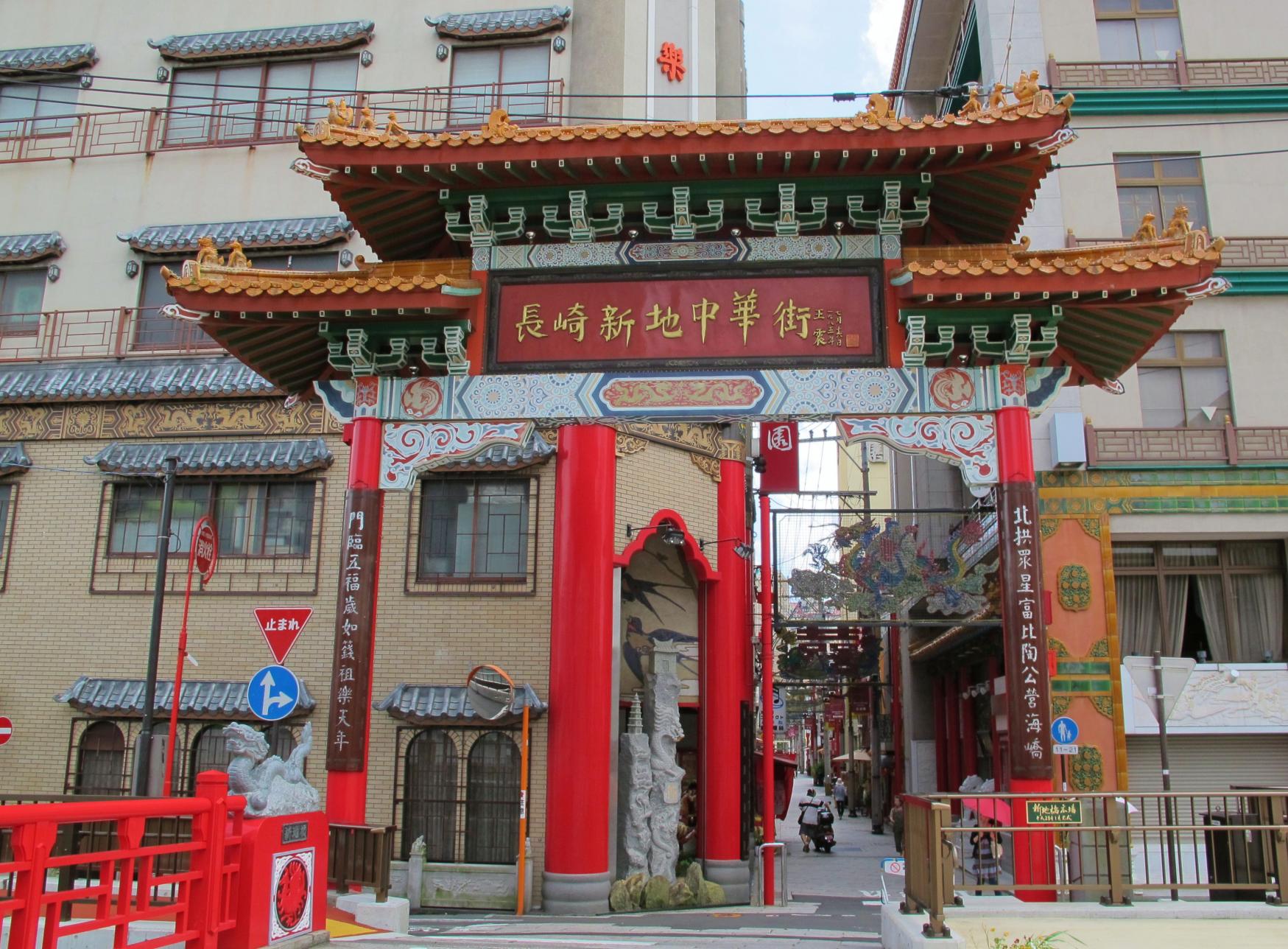
| Address | 850-0842 長崎県長崎市新地町 |
|---|
Approx. 10 min. by tram (Shinchi Chinatown Tram Stop〜Oura Cathedral Tram Stop)
【Day 2】Gunkanjima Digital Museum
Time travel to the golden age of Gunkanjima !
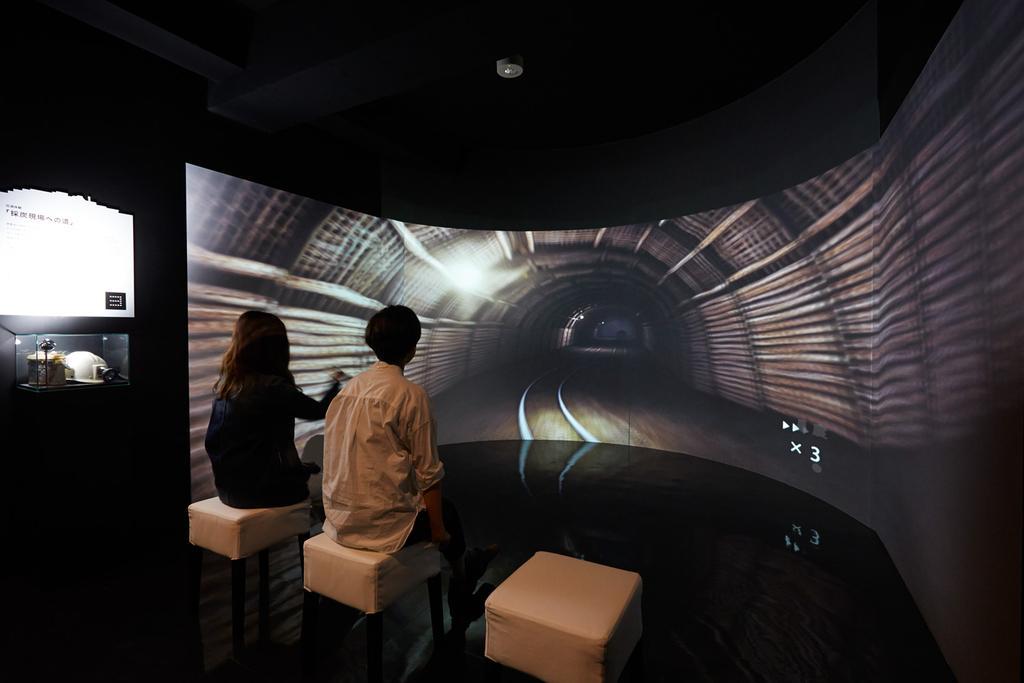
Here at the Gunkanjima Digital Museum, not only can you learn about the history of Gunkanjima in its prime days, there are also many fun and interactive activities available. For example, you can explore Gunkanjima in its current state via VR lenses (this includes the restricted area that no one can access in person) and many other activities using the leading-edge digital technology. In addition, 5-sides 3D theater video experience will open on March, 2024!
| Address | 850-0921 長崎県長崎市松が枝町5-6 | |
|---|---|---|
| TEL | 095-895-5000 | |
| Hours of Operation | 9:00~17:00(Last entry at 16:30) |
Approx. 5 min. walk
【Day 2】Oura Cathedral / La cathédrale d’Oura
Hidden Christian Sites in the Nagasaki Region / Les Sites chrétiens cachés de la région de Nagasaki
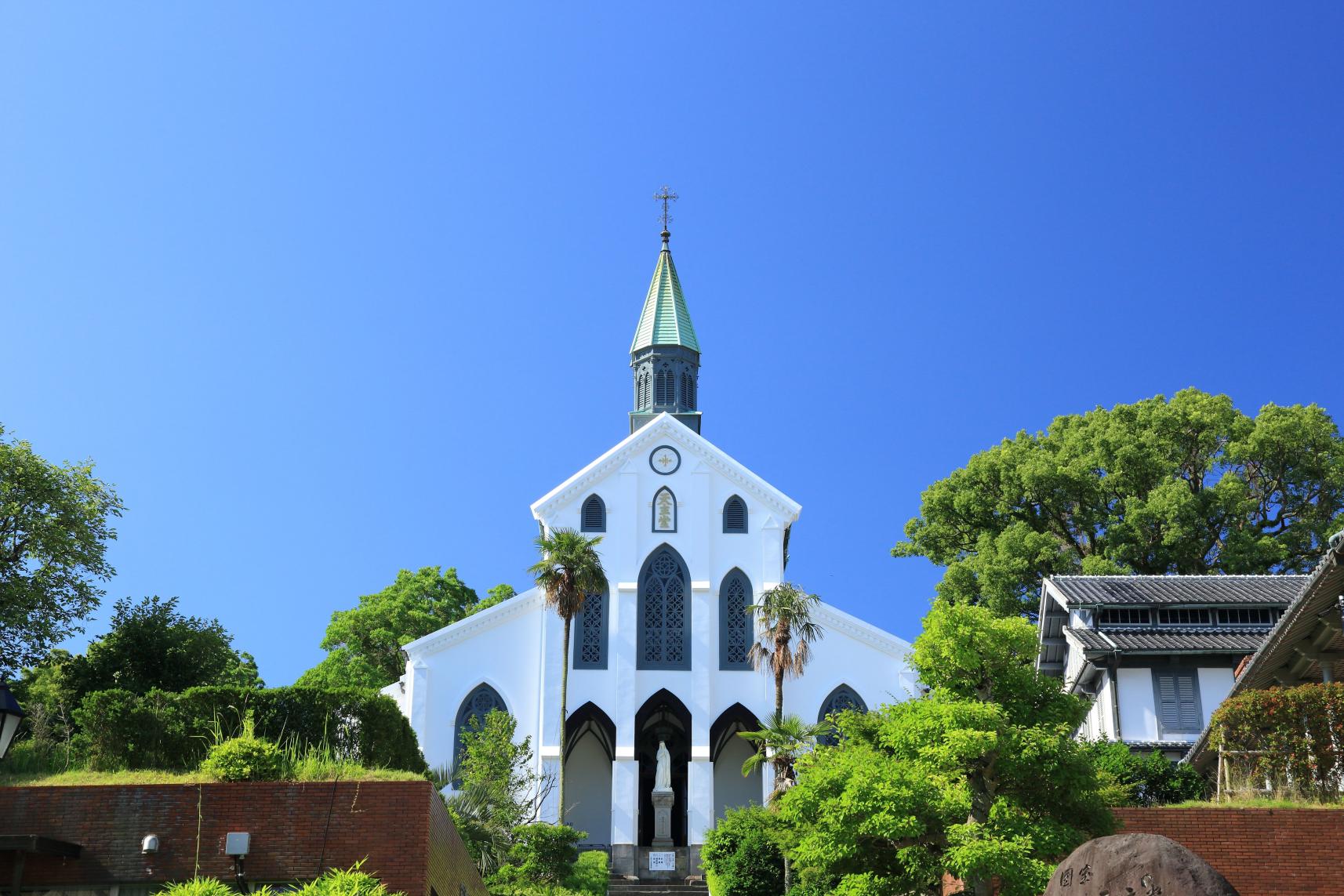
Oura Cathedral is located on a hill facing the Port of Nagasaki in the south of the Nagasaki region. Its precincts contain the parish house, the church building that was initially built for the foreigners within the Nagasaki Foreign Settlement, a seminary and a catechist school (both of which were established for missionary work after the lifting of the ban on Christianity).
Oura Cathedral stands within the former Foreign Settlement established in Oura after Japan opened its ports to overseas trade. In 1862, Father Furet of the Paris Foreign Missions Society selected the location to construct the church for use as the base of the Society’s mission in Nagasaki.
Within the precincts of the cathedral, a parish house was built first in 1863, then the church building itself was built in 1864. It had a Gothic-style exterior with three belfries. The floor plan had three naves, and its façade had a building plaque just like Buddhist temples, reading ‘Tenshudo’ (literally meaning ‘church’). It was dedicated to the 26 Catholics who were martyred in Nagasaki in the 16th century and canonised in 1862. The building faces in the direction of Nishizaka, their martyrdom site.
In 1865, soon after the dedication ceremony, a dozen Hidden Christians from Urakami Village in Nagasaki visited the church, and one of them approached Father Petitjean saying ‘We are of one heart with you’, and revealed their secret faith. News of this dramatic event, which came to be called the ‘Discovery of Hidden Christians’, immediately reached the Hidden Christian communities in the Nagasaki region, encouraging their leaders to visit the missionaries at the church as well.
Such contact with the missionaries brought about a transitional phase of the Hidden Christian communities and prompted various reactions among them. Those who decided to receive guidance from the missionaries revealed their faith in public, although the ban on Christianity was still in effect. As a result, the Tokugawa Shogunate arrested the Hidden Christians in Urakami in 1867, and the Meiji Government which continued the Shogunate’s policy of banning Christianity exiled more than 3,000 of them to twenty domains throughout Japan and tortured them in order to make them recant their faith. This incident is called ‘Urakami Yonban Kuzure’. On the Goto Islands, those Hidden Christians who revealed their faith in public were captured (Goto Kuzure), and on Hisaka Island, as many as 200 Hidden Christians were thrown in a jail cell roughly 19.8 square meters in area, killing many of them (the Royanosako Martyrdom). The missionaries of Oura Cathedral addressed the consulates of Western countries represented in Japan to help stop these persecutions. The Meiji Government lifted the ban in 1873 in response to increasing criticism from western countries, eventually putting an end to the suppression of Christianity in Japan.
Following the lifting of the ban, the Hidden Christian communities split into three groups: those who decided to receive guidance from the missionaries and join the Catholic Church as their ancestors did in the 16th century, those who decided to continue their unique way of practising the faith that they had developed for two and a half centuries, and those who converted to Buddhism or Shinto.
The missionaries of the church gave full catechistical instruction to the former Hidden Christians, placing great importance on the catechism and specific terms in Portuguese and Latin that had been introduced by the Catholic mission in the 16th century and that the religious communities of Hidden Christians had, hitherto, transmitted from generation to generation by themselves. The missionaries made coloured engravings and other materials for the mission as well. At the same time, they also reintegrated the distinctive ways of the Hidden Christians into the more conventional rituals and customs of Catholicism.
The church building underwent extension work to deal with an increasing number of Catholics attending church services after the lifting of the ban, and in 1879 the scale and the appearance of the building took on the form that is seen today. Within its precincts, the Latin Seminary and the Catechist School were established for the purpose of training Japanese clergy. The Latin Seminary was constructed in 1875, and the Japanese graduates were sent to the remaining Hidden Christian communities following the first graduation ceremony in 1879. The Catechist School was established around 1883 in order to train catechists to give catechistical instruction in the remaining Hidden Christian villages, in place of missionaries, so that it was easier to visit these villages scattered throughout such a large area. Many Japanese catechists graduated from the school, and until 1892 were sent to the Nagasaki region to carry out their missionary work. The Latin Seminary and the Catechist School provided the driving forces encouraging Hidden Christians to rejoin the Catholic Church during this transitional phase.
| Address | 850-0931 長崎県長崎市南山手町5-3 | |
|---|---|---|
| TEL | 095-823-2628(大浦天主堂) | |
| Hours of Operation | 8:30~18:00(Last entry at 17:30) |
Approx. 5 min. walk
【Day 2】Glover Garden

Inside the gardens, one can tour the Thomas B. Glover Residence, Japan's oldest wooden Western-style residence. Through his trading businesses, Glover contributed much to Japan's modernization. The gardens, in addition to revealing the living circumstances of Nagasaki's foreign residents during what is known as "the period of foreign settlement," also display an abundance of fascinating natural beauty. Now all can view the same scenery, and relax in the same gentle breezes, enjoyed by these renowned historical personages.
| Address | 850-0931 長崎県長崎市南山手町8-1 | |
|---|---|---|
| TEL | 095-822-8223 | |
| Hours of Operation | 8:00~18:00(Last entry at 17:40) ※Hours of operation may change depending on the season. |
Approx. 10 min. walk, approx. 15 min. by tram (Oura Cathedral Tram Stop〜Shinchi Chinatown〜Nagasaki Station), approx. 45 min. by free hotel shuttle bus from Nagasaki Station
【Day 2】Iojima (Outdoor BBQ / Onsen / Bedrock Bathing) i+Land nagasaki
A Resort-Like Island
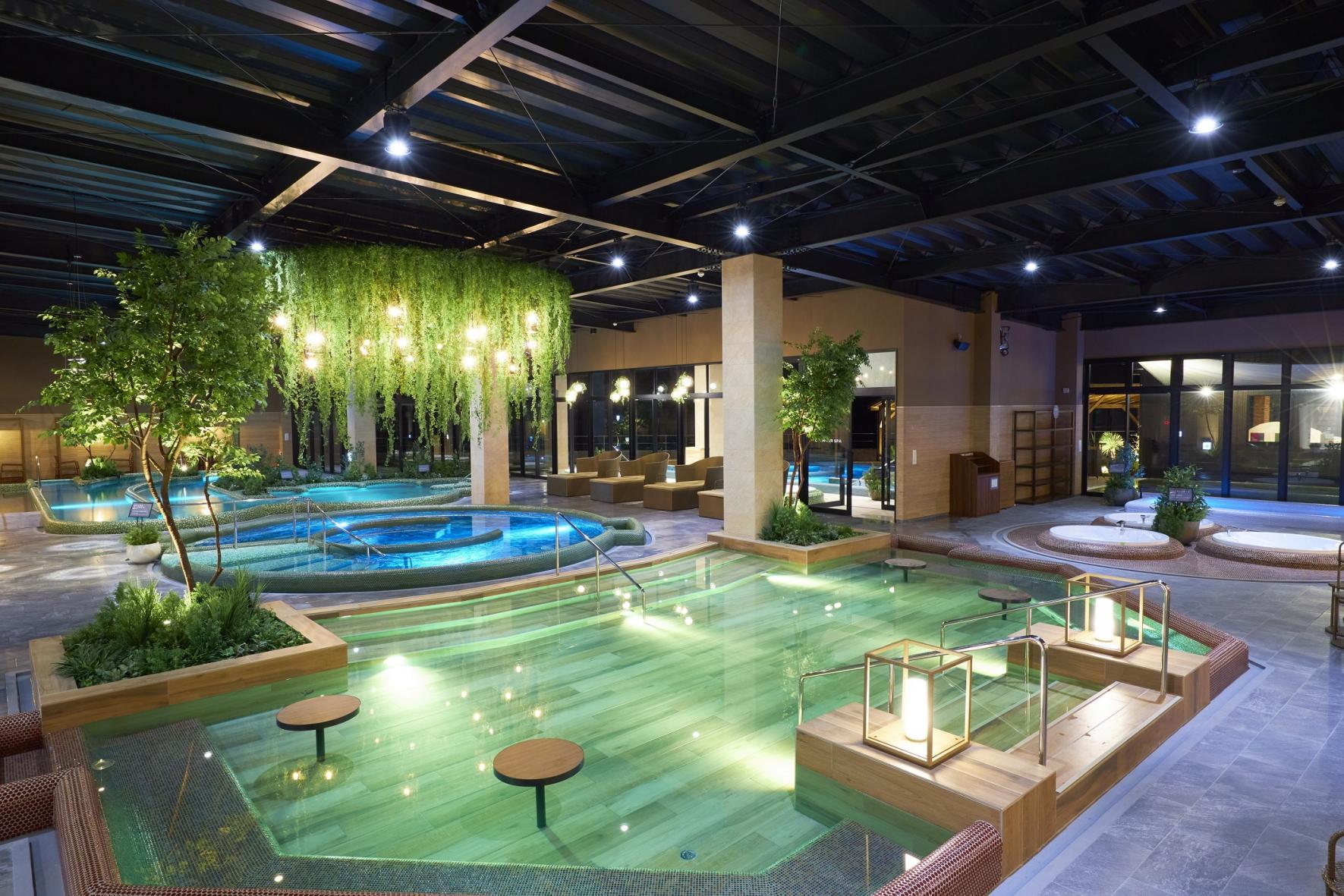
Located 10km southwest of central Nagasaki, Iojima was once a coal mining island, but is now being developed as a resort island. The "i+Land nagasaki" resort facility has installed outdoor BBQ equipment and digital art images, and has a spa that can be enjoyed in a bathing suit, an open air bath overlooking the sea, and a hot stone spa that is reminiscent of nature therapy. There are also plentiful accommodation facilities.
【Day 3】Rent a bicycle at i+Land nagasaki
Cycling in the Sea Breeze
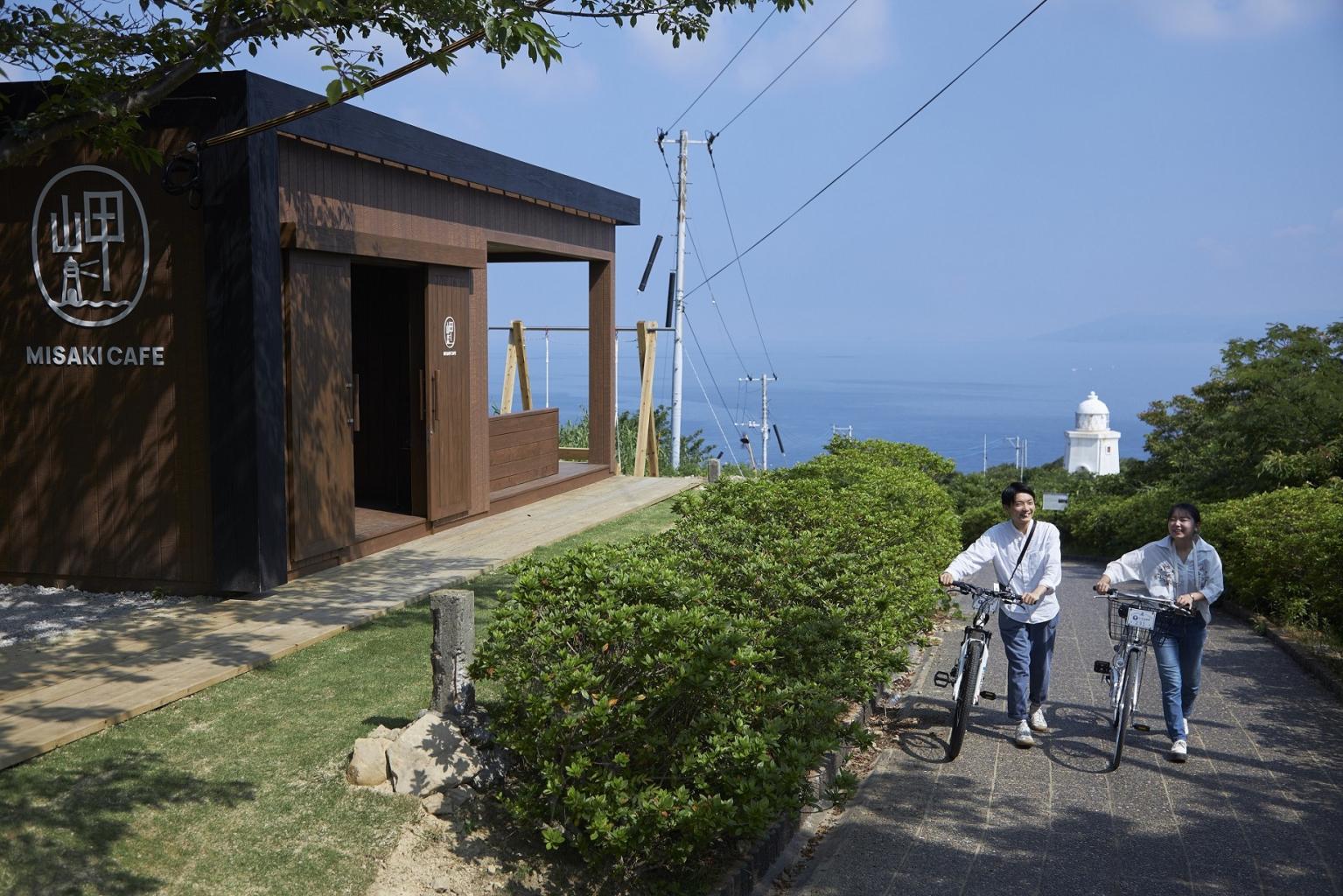
Rent a bicycle and visit cafes where you can enjoy a superb view, or enjoy the resort atmosphere as the sea breeze blows around you.
The "Iojima Lighthouse," which still has a beautiful appearance despite being damaged by the atomic bomb, and the "Magome Church" white chalk cathedral make for a wonderful contrast with the deep, blue sea.
【Day 3】Marine Activities
Having Fun in a Resort Atmosphere
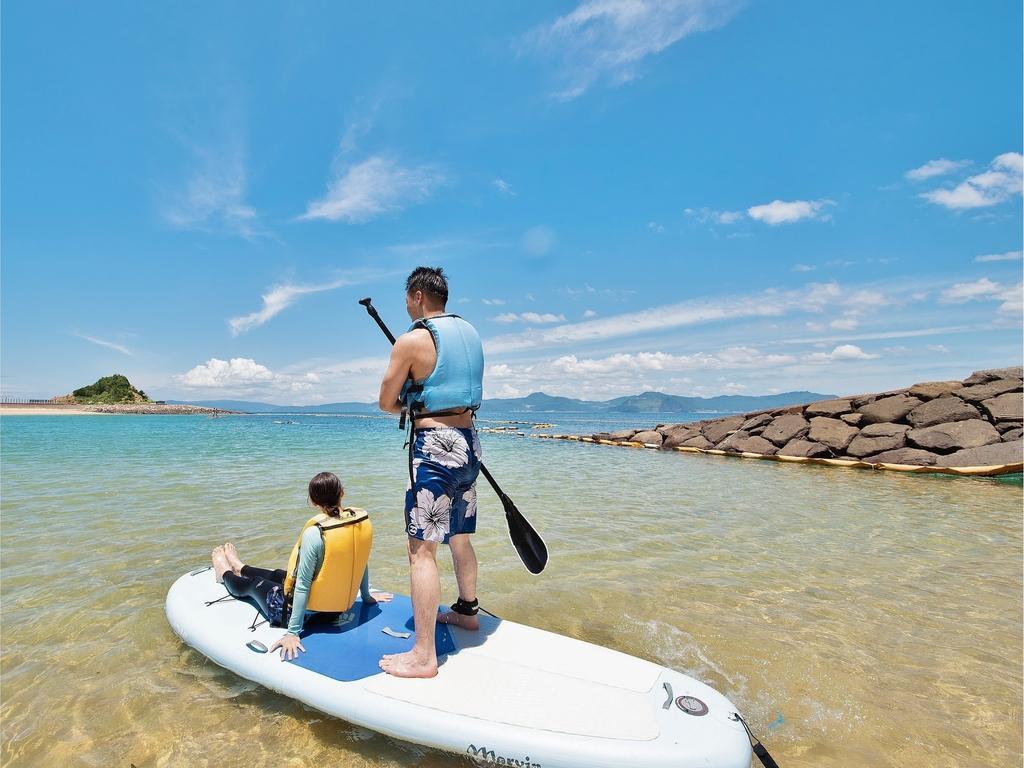
There are a plethora of marine activities available to enjoy, such as SUP and sea kayaking, which can be enjoyed all year round, as well as summer-only snorkeling, and a wakeboarding experience in the spring, summer, and fall. Advance reservation is required.
【Day 3】Stay at Nearby Hotels
Approx. 45 min. by free hotel shuttle bus
【Day 4】Nagasaki Station
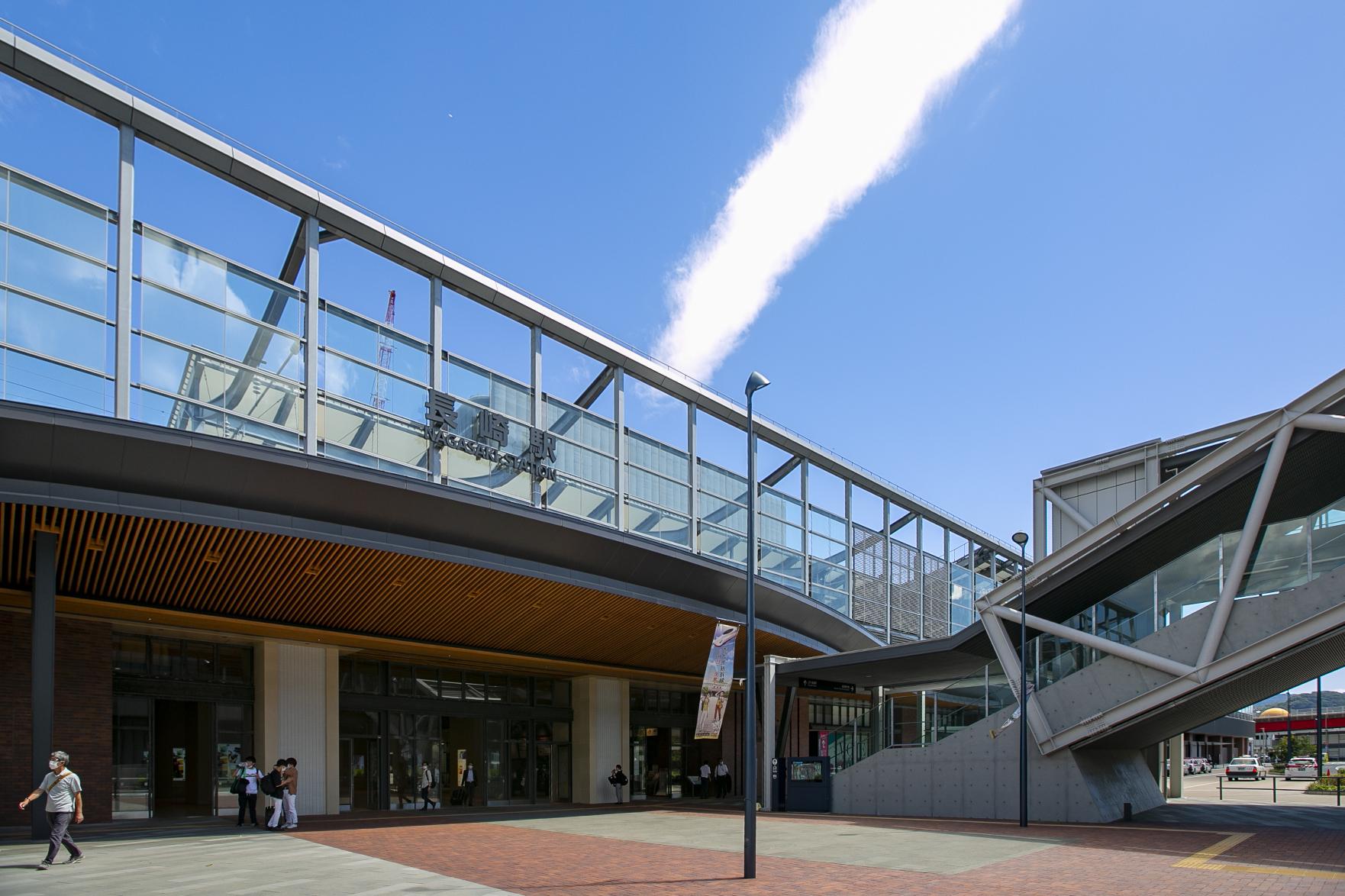
FINISH
Google Map may not be properly displayed if the volume per day exceeds the limit.



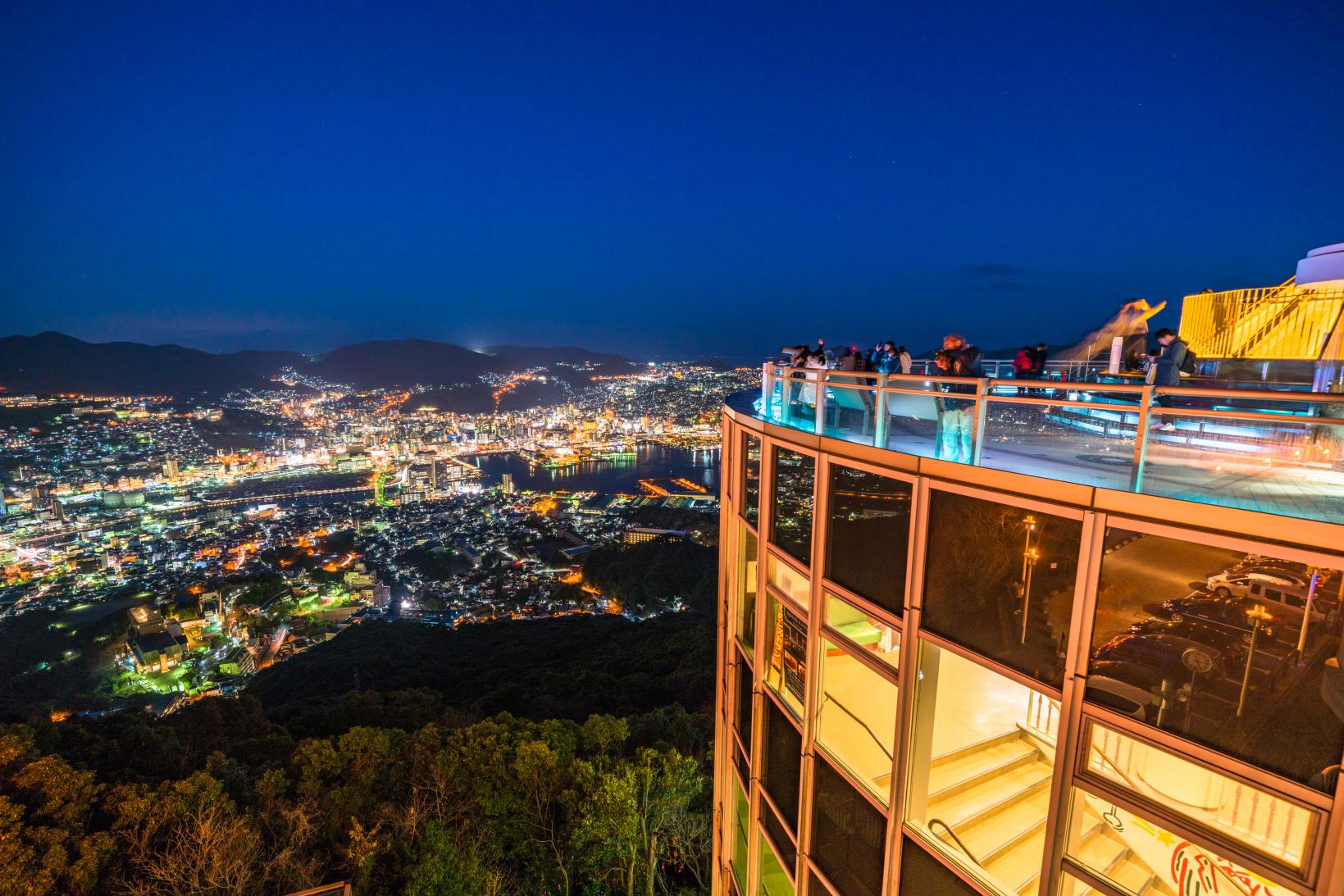
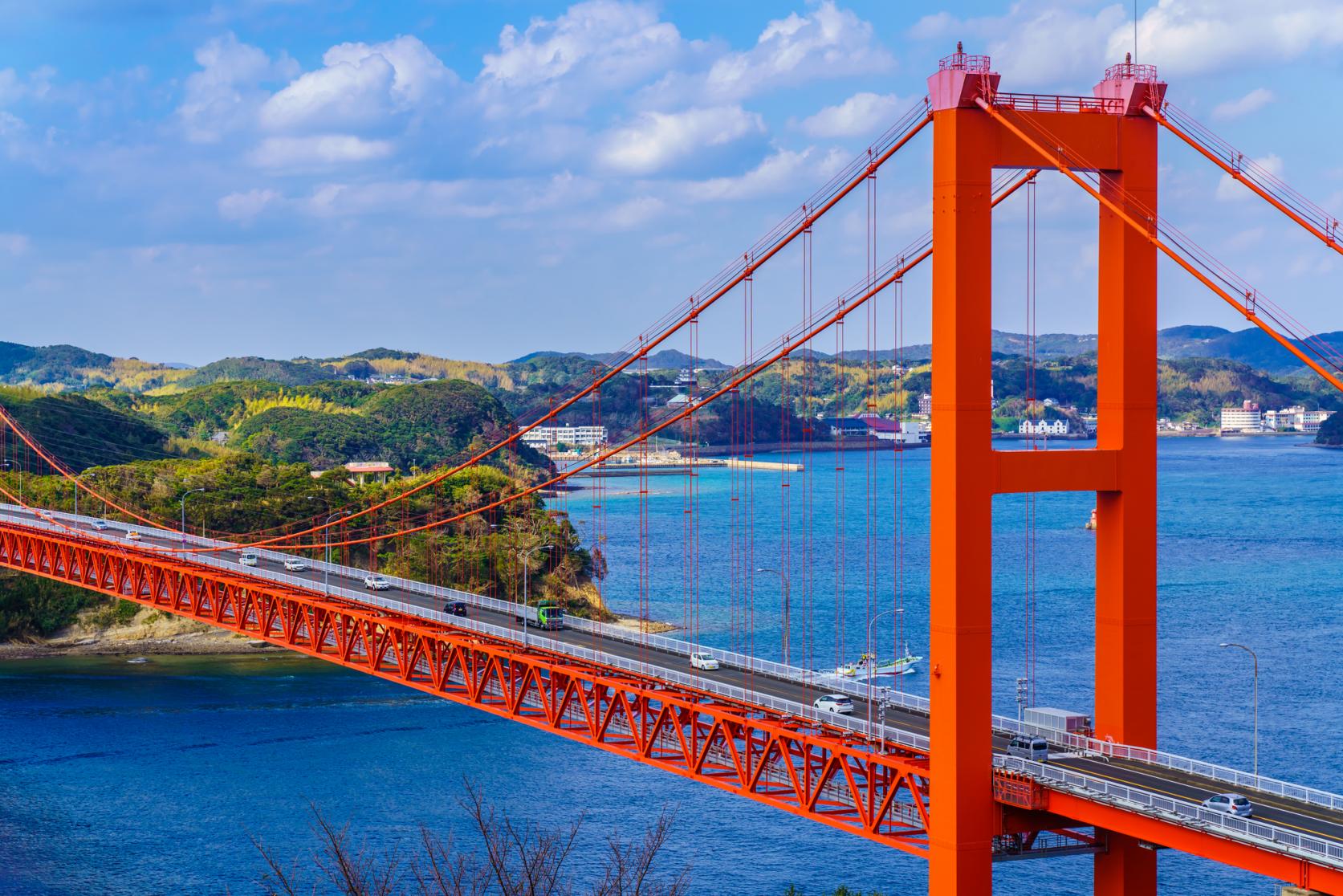
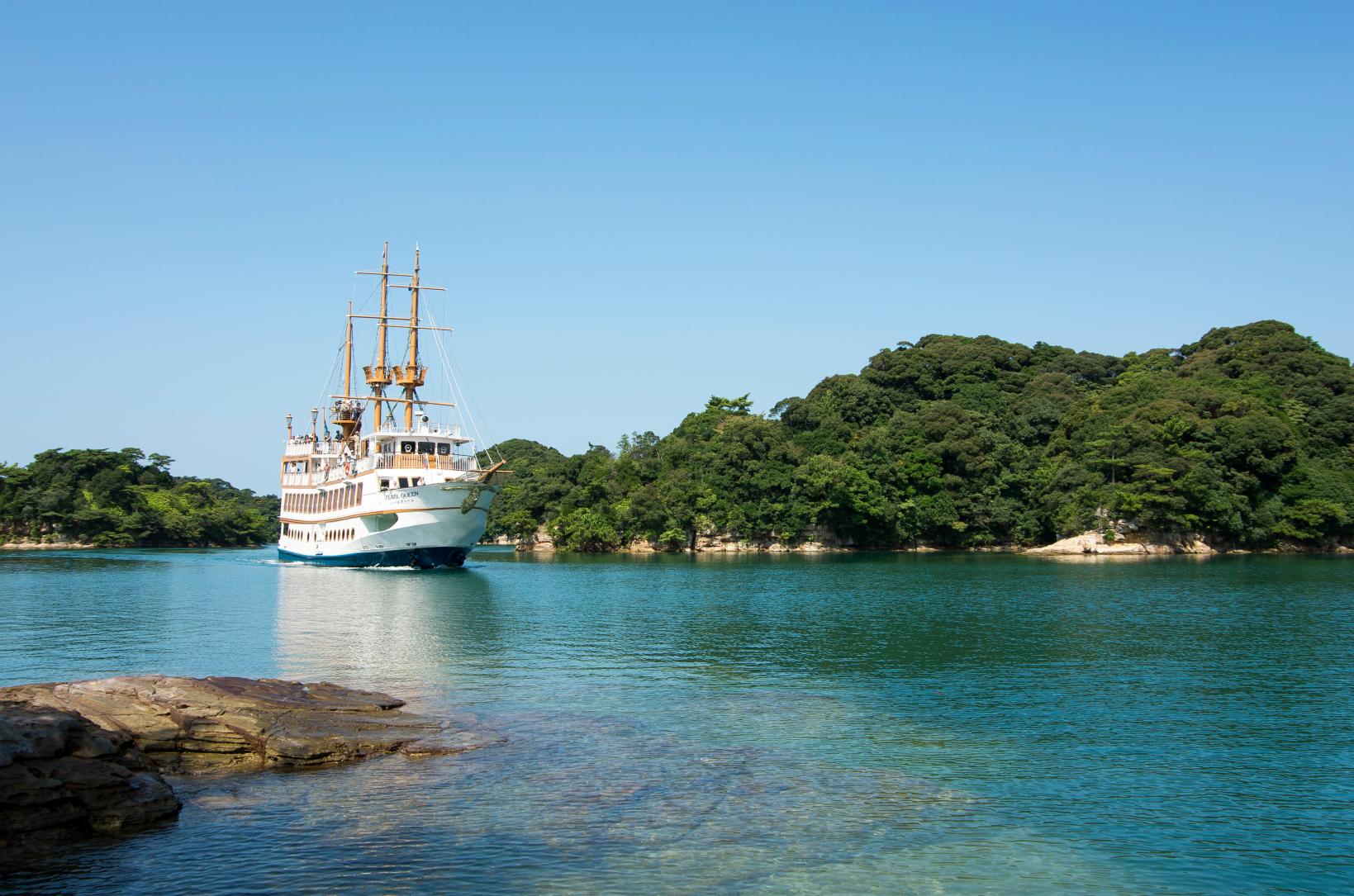
![[Starting from Kumamoto] Sightseeing in Kumamoto City & Unzen, Shimabara: A self-indulgent route around Goto-1](https://www.nagasaki-tabinet.com/storage/special_features/688/responsive_images/mQ8UXFjlMWs9jf2DJp7Ut1pIsLO7JGHPjeFlEHkc__1639_922.jpeg)
